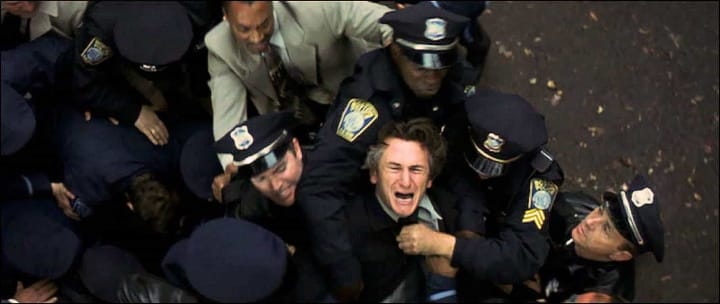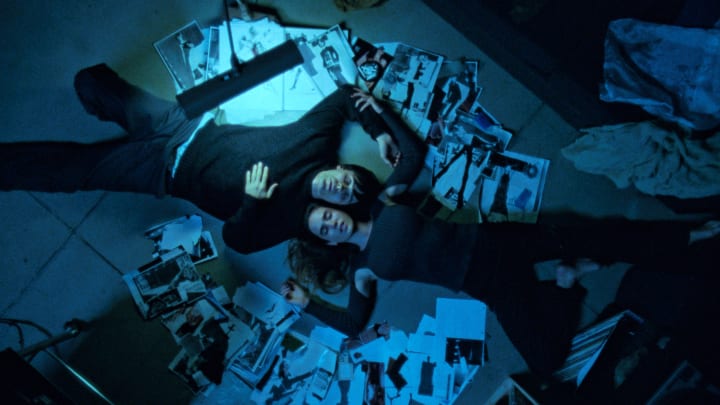A Filmmaker's Guide to: God's Eye View Shots
Film Studies (Pt.116)

In this chapter of ‘the filmmaker’s guide’ we’re actually going to be learning about literature and film together. I understand that many of you are sitting in university during difficult times and finding it increasingly hard to study and I understand that many of you who are not at university or not planning on it are possibly stuck of what to do, need a break or even need to catch up on learning film before you get to the next level. This guide will be brief but will also contain: new vocabulary, concepts and theories, films to watch and we will be exploring something taboo until now in the ‘filmmaker’s guide’ - academia (abyss opens). Each article will explore a different concept of film, philosophy, literature or bibliography/filmography etc. in order to give you something new to learn each time we see each other. You can use some of the words amongst family and friends to sound clever or you can get back to me (email in bio) and tell me how you’re doing. So, strap in and prepare for the filmmaker’s guide to film studies because it is going to be one wild ride.
God's Eye View Shots

What are they?
Taken from above, they are slightly different to the 'bird's eye view' shot because bird's eye view shots try to show us space and perspective whilst incurring movement whereas the God's eye view shot tries to show us character and symbolism. The bird's eye view shot is normally taken of a place or a landscape of some situation whereas, the God's eye view shot is normally taken of the people or the situation that is happening at that particular moment. The fancy term for it is ‘Aerial Shot’ - but I feel like it is more difficult to sense what the term ‘Aerial Shot’ might mean. “God’s Eye View” makes it far easier to guess what the term might be referring towards.
How is it used?
Normally representative of a character or situation, the God's Eye View Shot is common amongst modernist and post-modernist directors for reasons of symbolism. They can create meaning from key scenes and situations by taking us away from the regular scene and placing us above it in order to view not only a different angle but also from a different perspective. For example: certain things we can see from above, we cannot see from medium or wide shots. But it can also make us feel like the characters themselves in their situation are aware of being over-watched by a higher power. Some sort of omniscience is watching them and to place them in direct view of the God's Eye View Shot - they can definitely show themselves as being aware of that.
Case Studies: "Requiem for a Dream" vs. "Eternal Sunshine of the Spotless Mind"


There are various methods to show the God’s Eye View Shot but I think that one of the most effective methods is to have your camera not only pointing directly upon the character/situation but to be made to fit in a medium to wide shot in order to capture the true sense of omniscience. In my opinion, without this, it is not as effective because we get a very small frame of what is actually happening and therefore, you can lose meaning. For example: the shot in “Requiem for a Dream” in which the characters are lying in opposite directions is done in a close shot because of the meaning itself confided to a small room. This does not mean it is ineffective. It simply means it is using the space provided. If you were to do that in an exterior landscape then I am afraid that meaning and time would be lost within the situation. However, the ones we see in “Eternal Sunshine of the Spotless Mind” are more suited to the exterior situations of the characters in creating space and therefore, slowing down the sensations of time.
Conclusion
When you are studying the God’s Eye View Shot, you want to pay attention to the passage of time as well because the size of your shot will not only indicate that but will give the audience something to expect. The larger and wider the shot, the slower the passage of time - this is something I have correlated but it may be possible to reverse. You should aim to do your reading on various art films which use this. Commercial films do not tend to do this with overtly intended meaning and so, it may be easier to start off finding meaning within the artistic or independent film realm.
About the Creator
Annie Kapur
200K+ Reads on Vocal.
English Lecturer
🎓Literature & Writing (B.A)
🎓Film & Writing (M.A)
🎓Secondary English Education (PgDipEd) (QTS)
📍Birmingham, UK






Comments
There are no comments for this story
Be the first to respond and start the conversation.